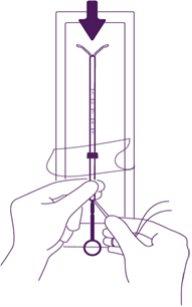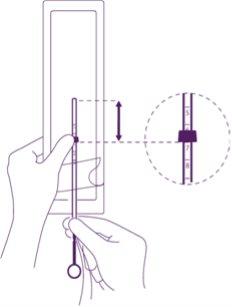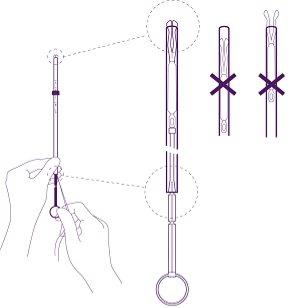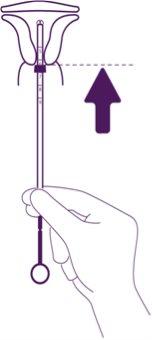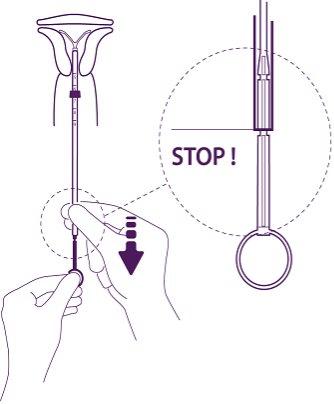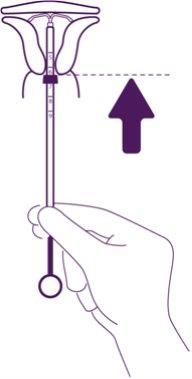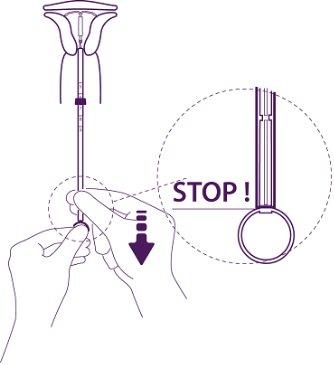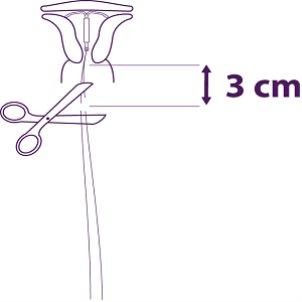
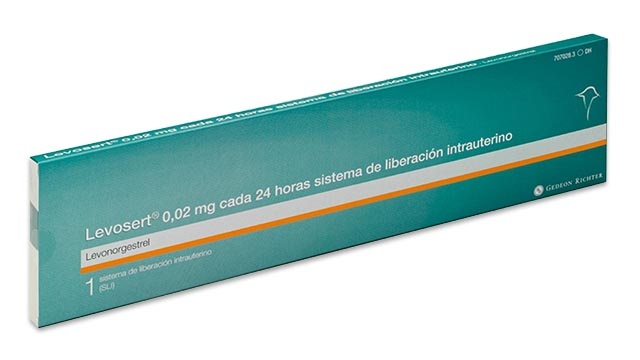
ЛЕВОСЕРТ 0,02 мг КАЖДЫЕ 24 ЧАСА ВНУТРИМАТЕРОЧНАЯ СИСТЕМА ПРОДОЛЖИТЕЛЬНОГО ВЫСВОБОЖДЕНИЯ


Инструкция по применению ЛЕВОСЕРТ 0,02 мг КАЖДЫЕ 24 ЧАСА ВНУТРИМАТЕРОЧНАЯ СИСТЕМА ПРОДОЛЖИТЕЛЬНОГО ВЫСВОБОЖДЕНИЯ
Введение
Инструкция: информация для пациентки
Левосерт 0,02мг каждые 24часа система внутриматочной доставки
левоноргестрел
Прочитайте внимательно всю инструкцию перед началом использования этого лекарства, поскольку она содержит важную информацию для вас.
- Сохраните эту инструкцию, поскольку вам может потребоваться прочитать ее снова.
- Если у вас есть какие-либо вопросы, проконсультируйтесь с вашим врачом или фармацевтом.
- Если вы испытываете побочные эффекты, проконсультируйтесь с вашим врачом или фармацевтом, даже если это побочные эффекты, которые не указаны в этой инструкции. См. раздел 4.
Содержание инструкции
- Что такое Левосерт и для чего он используется
- Что вам нужно знать перед началом использования Левосерта
- Как использовать Левосерт
- Возможные побочные эффекты
- Хранение Левосерта
- Содержание упаковки и дополнительная информация
1. Что такое Левосерт и для чего он используется
Левосерт - это система внутриматочной доставки (СВД) для введения в матку, где он медленно выпускает гормон левоноргестрел.
Он используется для:
Контрацепции
Это лекарство является эффективным методом контрацепции длительного действия, не являющимся постоянным (реверсибельным).
Это лекарство предотвращает беременность, утончая слизистую оболочку матки (эндометрий), делая более густым нормальный мокротечный секрет шейки матки (цервикальный канал), так что сперматозоиды не могут проникнуть через него для оплодотворения яйцеклетки, и предотвращая овуляцию у некоторых женщин. Кроме того, присутствие Т-образного корпуса оказывает местные эффекты на слизистую оболочку матки.
Систему необходимо удалить после 8 лет использования, когда она используется в качестве контрацептива.
Лечение обильных менструальных кровотечений
Это лекарство также полезно для уменьшения менструальных кровотечений, поэтому его можно использовать, если вы страдаете обильными менструальными кровотечениями (меноррагией). Гормон в этом лекарстве действует, утончая слизистую оболочку вашей матки, так что каждый месяц будет меньше кровотечений.
Систему необходимо удалить или заменить после 8 лет использования или раньше, если обильные менструальные кровотечения возобновятся или станут тревожными.
Дети и подростки
Это лекарство не показано для использования до первой менструации (менархе).
2. Что вам нужно знать перед началом использования Левосерта
Не используйте Левосерт:
- если вы беременны или подозреваете, что можете быть беременной;
- если у вас есть или было воспалительное заболевание тазовых органов;
- если у вас есть необычные или неприятные вагинальные выделения, или зуд влагалища, поскольку это может указывать на инфекцию;
- если у вас есть или было воспаление слизистой оболочки матки после родов;
- если у вас есть или было инфекционное заболевание матки после родов или после аборта в течение последних 3 месяцев;
- если у вас есть или было воспаление шейки матки;
- если у вас есть или было аномальное результат теста Папаниколау (изменения шейки матки);
- если у вас есть или было проблемы с печенью;
- если у вас есть опухоль печени;
- если у вас есть аномалия матки, включая маточные миомы, особенно те, которые деформируют полость матки; у вас есть аномальный вагинальный кровотечения;
- если у вас есть состояние, которое делает вас восприимчивым к инфекциям. Врач сказал бы вам, если у вас есть такое состояние;
- если у вас есть или было гормонозависимый рак, такой как рак молочной железы;
- если у вас есть или было подозрение на любой тип рака, включая рак крови (лейкемию), маточный и шейный рак, если только вы не находитесь в стадии ремиссии;
- если у вас есть или было трофобластическое заболевание. Врач сказал бы вам, если у вас есть такое заболевание;
- если вы аллергичны к левоноргестрелю или любому другому компоненту этого лекарства (включая раздел 6).
Предостережения и меры предосторожности
Прежде чем это лекарство будет введено, ваш врач или медсестра проведут некоторые тесты, чтобы убедиться, что это лекарство подходит вам. Это будет включать пельвиальный осмотр и также может включать другие тесты, такие как осмотр груди, если ваш врач или медсестра считают это подходящим.
Генитальные инфекции должны быть успешно вылечены перед введением этого лекарства.
Если у вас есть эпилепсия, сообщите об этом врачу или медсестре перед введением этого лекарства, поскольку, хотя это редко, может произойти приступ во время введения. Некоторые женщины могут чувствовать, что они теряют сознание после процедуры. Это нормально, и ваш врач или медсестра скажут вам отдохнуть немного.
Это лекарство может не подходить для всех женщин.
Левосерт, как и другие гормональные контрацептивы, не защищает от инфекции ВИЧ (СПИД) или любой другой болезни, передающейся половым путем (например, хламидиоз, герпес гениталий, генитальные бородавки, гонорея, гепатит Б и сифилис). Вам понадобятся презервативы, чтобы защититься от этих заболеваний.
Поговорите с вашим врачом перед использованием Левосерта:
- если у вас есть или развивается мигрень, головокружение, размытое зрение, сильные головные боли или если у вас часто бывают головные боли;
- если у вас есть желтуха кожи или белого глаза (желтуха);
- если вы диабетик (слишком высокий уровень сахара в крови), у вас высокое кровяное давление или аномальные уровни липидов в крови;
- если у вас был рак, влияющий на кровь (включая лейкемию), который сейчас находится в стадии ремиссии
- если вы проходите долгосрочное лечение стероидами;
- если у вас был внешнематочный беременность (развитие плода вне матки) или история овариальных кист;
- если у вас было или есть серьезное заболевание артерий, такое как инфаркт или инсульт, или если у вас есть проблемы с сердцем;
- если у вас есть история тромбозов;
- если вы принимаете другие лекарства, поскольку некоторые лекарства могут предотвратить нормальное функционирование Левосерта;
- если у вас есть нерегулярные кровотечения;
- если у вас есть приступы (эпилепсия).
Если у вас есть или было любое из этих состояний, ваш врач решит, можете ли вы использовать Левосерт.
Также вам необходимо сообщить врачу, если любое из этих состояний возникает впервые, пока у вас введен Левосерт.
Вам следует как можно скорее обратиться к врачу или медсестре, если вы испытываете болезненное опухание ноги, внезапную боль в груди или трудности с дыханием, поскольку это могут быть признаки тромбоза. Важно, чтобы любой тромбоз был немедленно behandelt.
Исключение
Маточные мышечные сокращения во время менструации могут иногда вытолкнуть СВД из его положения или исключить его. Это более вероятно, если у вас есть избыточный вес на момент введения СВД или если у вас есть история обильных менструаций. Если СВД исключен, он может не функционировать правильно, и, следовательно, риск беременности увеличивается. Если СВД исключен, вы больше не защищены от беременности.
Возможные симптомы исключения - боль и аномальное кровотечение, но Левосерт также может быть исключен без вашего ведома. Поскольку Левосерт уменьшает менструальное кровотечение, увеличение кровотечения может быть указанием на исключение.
Рекомендуется, чтобы вы проверили нити пальцами, например, во время душа. См. также раздел 3 «Как использовать Левосерт - Как я могу знать, что Левосерт правильно введен?». Если вы испытываете признаки, указывающие на исключение, или не можете почувствовать нити, вам следует использовать дополнительный метод контрацепции (например, презервативы) и проконсультироваться с вашим медицинским специалистом.
Психиатрические расстройства
Некоторые женщины, использующие гормональные контрацептивы, такие как Левосерт, сообщили о депрессии или депрессивном состоянии. Депрессия может быть тяжелой и иногда может вызывать суицидальные мысли. Если вы испытываете изменения настроения и депрессивные симптомы, обратитесь к врачу за дополнительной медицинской консультацией как можно скорее.
Левосерт и курение
Рекомендуется женщинам бросить курить. Курение увеличивает риск развития инфаркта, инсульта или тромбоза.
Использование тампонов или менструальных чаш
Рекомендуется использовать прокладки. Если используются тампоны или менструальные чашки, необходимо осторожно менять их, чтобы не потянуть нити Левосерта.
Использование Левосерта с другими лекарствами
Эффект гормональных контрацептивов, таких как Левосерт, может быть уменьшен лекарствами, которые увеличивают количество ферментов, производимых печенью. Сообщите врачу, если вы принимаете:
- фенобарбитал, фенитоин или карбамазепин (для лечения эпилепсии);
- гризеофульвин (антифунгальный препарат);
- рифампицин или рифабутин (антибиотики);
- невирапин или эфавиренз (для ВИЧ).
Сообщите врачу, если вы принимаете, недавно принимали или можете принимать любое другое лекарство. Левосерт не должен использоваться одновременно с другим гормональным контрацептивом.
Беременность, лактация и фертильность
Не используйте Левосерт во время беременности или если подозреваете, что можете быть беременной.
Могу ли я забеременеть, используя Левосерт?
Очень редко женщина может забеременеть, имея введенный Левосерт.
Отсутствие менструации не обязательно означает, что вы беременны. Некоторые женщины могут не иметь менструаций, используя систему.
Если у вас нет менструации в течение 6 недель, рассмотрите возможность сделать тест на беременность. Если он отрицательный, нет необходимости проводить дополнительные тесты, если только у вас нет других симптомов беременности, таких как тошнота, усталость или чувствительность груди.
Если вы забеременели с введенным устройством, обратитесь к врачу как можно скорее, чтобы исключить внешнематочную беременность (развитие плода вне матки) и чтобы удалить Левосерт, чтобы уменьшить риск спонтанного аборта. Однако, если Левосерт остается введенным во время беременности, не только увеличивается риск спонтанного аборта, но и риск преждевременных родов. Если Левосерт не может быть удален, поговорите с вашим медицинским специалистом о преимуществах и рисках продолжения беременности. Если беременность продолжается, вы будете внимательно отслеживаться во время беременности и должны немедленно обратиться к врачу, если испытываете боли в животе, боли в животе или лихорадку.
Левосерт содержит гормон левоноргестрел, и были единичные случаи генитальных эффектов у детей, если они подвергались воздействию внутриматочных устройств с левоноргестрелом, находясь в матке.
А если я хочу иметь ребенка?
Если вы хотите иметь ребенка, попросите врача удалить Левосерт. Ваш нормальный уровень фертильности быстро восстановится после удаления системы.
Могу ли я кормить грудью, используя Левосерт?
В грудном молоке содержатся очень небольшие количества гормона Левосерта. Не ожидается, что это будет представлять какой-либо риск для новорожденного. Вы можете продолжать кормить грудью во время использования этого лекарства.
Вождение и использование машин
Не известно никаких эффектов на способность управлять транспортными средствами и использовать машины.
Левосерт содержит сульфат бария.
Т-образный корпус Левосерта содержит сульфат бария, поэтому его можно увидеть на рентгеновских снимках.
3. Как использовать Левосерт
Только врач или медсестра с специальной подготовкой могут вставить систему (см. специальные инструкции для вставки в упаковке).
Врач объяснит вам процедуру вставки и любые связанные с этим риски. После этого вас осмотрит ваш врач или медсестра перед вставкой Левосерта. Если у вас есть какие-либо вопросы о его использовании, вы можете проконсультироваться с ними.
Начало использования Левосерта
- Прежде чем вставить Левосерт, необходимо убедиться, что вы не беременны.
- Вам следует вставить Левосерт в течение 7 дней после начала менструации. Когда Левосерт вставляется в эти дни, он начинает действовать сразу и предотвратит беременность.
- Если вы не можете вставить Левосерт в течение 7 дней после начала менструации или если ваш менструальный цикл непредсказуем, Левосерт можно вставить в любой другой день. В этом случае вы не должны были иметь незащищенные половые контакты с момента последней менструации и должны иметь отрицательный тест на беременность перед вставкой. Кроме того, Левосерт может не предотвратить беременность надежно сразу. Поэтому вам следует использовать барьерный метод контрацепции (например, презервативы) или воздерживаться от вагинальных половых контактов в течение первых 7 дней после вставки Левосерта.
- Левосерт не подходит для использования в качестве экстренной контрацепции (послекоитальной контрацепции).
Начало использования Левосерта после родов
- Левосерт можно вставить после родов, как только матка вернется к своему нормальному размеру, но не раньше чем через 6 недель после родов (см. раздел 4 «Возможные побочные эффекты – Перфорация»).
- См. также «Начало использования Левосерта» выше, чтобы узнать, что еще вам нужно знать о моменте вставки.
Начало использования Левосерта после аборта
Левосерт можно вставить сразу после аборта, если беременность была менее 3 месяцев и нет генитальных инфекций. В этом случае Левосерт начнет действовать сразу.
Замена Левосерта
Левосерт можно заменить на новый Левосерт в любой момент менструального цикла. В этом случае Левосерт начнет действовать сразу.
Смена другого метода контрацепции (например, гормональных контрацептивов, имплантата)
- Левосерт можно вставить сразу, если есть разумная уверенность, что вы не беременны.
- Если прошло более 7 дней с момента начала менструального кровотечения, вам следует воздерживаться от вагинальных половых контактов или использовать дополнительные методы контрацепции в течение следующих 7 дней.
Вставка Левосерта
Осмотр, проведенный вашим врачом перед вставкой, может включать:
- цитологический анализ шейки матки (Пап-тест);
- осмотр груди;
- другие тесты, например, на инфекции, включая заболевания, передающиеся половым путем, тест на беременность, по мере необходимости. Ваш врач также проведет гинекологический осмотр, чтобы определить положение и размер матки.
После гинекологического осмотра
- Инструмент, называемый спекулумом, вводится во влагалище, и шейка матки может быть очищена антисептическим раствором. Затем Левосерт вставляется в матку с помощью тонкой и гибкой пластиковой трубки (трубки для вставки). Можно применить местную анестезию на шейке матки перед вставкой.
- Некоторые женщины чувствуют головокружение или теряют сознание во время вставки или после того, как Левосерт был вставлен или удален.
- Вы можете испытать некоторый дискомфорт и кровотечение во время или сразу после вставки.
После вставки Левосерта вам следует получить карточку напоминания для пациента от вашего врача для последующих осмотров. Возьмите эту карточку с собой на каждую запланированную встречу.
Как быстро начинает действовать Левосерт?
Контрацепция
Если Левосерт вставляется в вашу матку во время менструации или в течение 7 дней после начала менструации, или если у вас есть устройство и пора его заменить на новое, или если вы только что сделали аборт, вы защищены от беременности с момента вставки системы.
Обильные менструальные кровотечения
Левосерт обычно приводит к значительному уменьшению кровопотери во время менструации в течение 3-6 месяцев лечения.
Как Левосерт повлияет на мои менструации?
Многие женщины испытывают пятна (небольшую кровопотерю) в течение первых 3-6 месяцев после вставки системы. Другие могут иметь длительные или обильные кровотечения. Однако вы можете испытать увеличение кровотечения, обычно в течение первых 2-3 месяцев, прежде чем будет достигнуто уменьшение кровопотери. В целом, у вас больше шансов иметь меньше дней кровотечения каждый месяц, и вы даже можете перестать иметь менструации. Это связано с действием гормона (левоноргестрела) на слизистую оболочку матки. Если не наблюдается значительного уменьшения кровопотери в течение 3-6 месяцев, следует рассмотреть другие методы лечения.
Если вы имели вставленный Левосерт в течение длительного периода времени и затем начинаете испытывать проблемы с кровотечением, свяжитесь с вашим врачом или медицинским специалистом, чтобы получить совет.
Как часто мне следует проверять систему?
Вам следует проверить Левосерт через 4-6 недель после вставки и затем регулярно,至少 один раз в год до его удаления. Ваш врач может определить, с какой частотой и какие виды осмотров необходимы в вашем конкретном случае. Возьмите карточку напоминания для пациента, которую вы получили от вашего врача, на каждую запланированную встречу. Кроме того, вам следует связаться с вашим врачом, если вы испытываете любой из симптомов, описанных в разделе 2 «Предостережения и меры предосторожности».
Как я могу знать, что система находится на месте?
После каждой менструации вы можете искать два тонких нити, прикрепленных к нижнему концу системы. Ваш врач покажет вам, как это сделать.
Не тянитеза нити, поскольку вы можете случайно вытащить систему. Если вы не можете найти нити, свяжитесь с вашим врачом или медсестрой как можно скорее и избегайте половых контактов или используйте барьерный метод контрацепции (например, презервативы) до тех пор, пока не будете осмотрены. Возможно, нити просто вошли в матку или шейку матки. Если ваш врач или медсестра не могут найти нити, они могли сломаться, или Левосерт мог выйти самостоятельно, или в редких случаях мог произойти прокол стенки матки (перфорация матки, см. раздел 4).
Вы также должны пойти к врачу, если можете прикоснуться к нижнему концу устройства или если вы или ваш партнер испытываете боль или дискомфорт во время половых контактов.
Что происходит, если система выходит самостоятельно?
Если система выходит полностью или частично, вы можете не быть защищены от беременности. Редко, но возможно, это может произойти без вашего ведома во время менструации. Необычное увеличение кровотечения во время менструации может быть признаком того, что это произошло. Сообщите вашему врачу или медицинскому специалисту, если вы испытываете неожиданные изменения в паттерне кровотечения.
Удаление Левосерта
Левосерт должен быть удален или заменен после 8 лет использования или раньше, если возобновляются обильные или неприятные менструальные кровотечения.
Ваш врач может легко удалить систему в любое время, после чего вы можете забеременеть. Некоторые женщины чувствуют головокружение или теряют сознание во время или после удаления Левосерта. Вы можете испытать некоторый дискомфорт и кровотечение во время удаления Левосерта.
Продолжение контрацепции после удаления
Если вы не хотите забеременеть, Левосерт не должен быть удален после 7-го дня менструального цикла (менструации), если только вы не будете использовать другие методы контрацепции (например, презервативы) в течение как минимум 7 дней до удаления СЛИ.
Если у вас есть нерегулярные менструации или вы не имеете менструаций, вам следует использовать барьерный метод контрацепции в течение 7 дней до удаления.
Кроме того, новый Левосерт может быть вставлен сразу после удаления, в этом случае не требуется дополнительная защита. Если вы не хотите продолжать использовать тот же метод, спросите вашего врача о других надежных методах контрацепции.
Если у вас есть дополнительные вопросы о использовании этого препарата, спросите вашего врача.
4. Возможные побочные эффекты
Как и все лекарства, этот препарат может вызывать побочные эффекты, хотя не все люди испытывают их.
С Левосертом побочные эффекты более часто встречаются в течение первых месяцев после вставки системы и уменьшаются со временем.
Если вы испытываете любой из следующих серьезных побочных эффектов, пожалуйста, свяжитесь с вашим врачом или медсестрой немедленно:
- Сильная боль или лихорадка, развивающаяся вскоре после вставкиможет указывать на то, что у вас есть серьезная инфекция, которую необходимо лечить немедленно. В редких случаях может произойти очень серьезная инфекция (сепсис).
- Сильная боль и постоянное кровотечениемогут быть признаком повреждения или разрыва стенки матки (перфорации). Перфорация редка, но чаще происходит во время вставки Левосерта, хотя может не быть обнаружена до некоторого времени после этого. Если Левосерт находится вне полости матки, он неэффективен для предотвращения беременности и должен быть удален как можно скорее; в очень редких случаях это может потребовать хирургического вмешательства. Риск перфорации низок, но увеличивается у женщин в период лактации или у женщин, которые родили ребенка до 36 недель до вставки, и может увеличиться у женщин с фиксированным матком, наклоненным назад (ретроверсия и фиксация матки). Если вы подозреваете, что могли испытать перфорацию, немедленно обратитесь за медицинской помощью и сообщите, что у вас вставлен Левосерт, особенно если это не был человек, который его вставил.
Возможные признаки и симптомы перфорации могут включать:
- сильную боль (например, менструальные спазмы) или более сильную боль, чем ожидается
- обильное кровотечение (после вставки)
- боль или кровотечение, продолжающееся более нескольких недель
- внезапные изменения менструаций
- боль во время половых контактов
- если вы больше не можете чувствовать нити Левосерта (см. «Как я могу знать, что система находится на месте?» в разделе 3).
- Боль в нижней части живота, особенно если у вас также есть лихорадка или вы имели пропущенную менструацию или неожиданное кровотечение,может быть признаком внематочной беременности (развития плода вне матки). Абсолютный риск внематочной беременности у пользователей Левосерта низок. Однако, когда женщина забеременеет с Левосертом внутри, вероятность внематочной беременности увеличивается.
- Боль в нижней части живота или трудные или болезненные половые контактымогут быть признаком овариальных кист или воспалительного заболевания тазовых органов. Это важно, поскольку воспалительные заболевания тазовых органов могут снизить ваши шансы на беременность и увеличить риск внематочной беременности.
Другие побочные эффекты
Очень часто(могут возникать у более 1 из 10 женщин) могут включать:
- отсутствие менструаций, легкие или редкие (см. «Как Левосерт повлияет на мои менструации?» в разделе 3.
- вагинальное кровотечение, включая пятна.
- вагинальные или генитальные инфекции (вульва), вызванные грибами или бактериями;
- акне (угри);
Часто(могут возникать у до 1 из 10 женщин) могут включать:
- депрессию, нервозность или другие изменения настроения;
- снижение сексуального влечения;
- головную боль;
- мигрень;
- чувство предобморочного состояния (предобморок);
- головокружение;
- боль в спине;
- дискомфорт в животе;
- тошноту;
- вздутие живота;
- рвоту;
- болезненные менструации;
- увеличение вагинального выделения;
- чувствительность и боль в груди;
- болезненные половые контакты;
- спазм матки;
- Левосерт выходит из места;
- прибавка в весе.
Редко(могут возникать у до 1 из 100 женщин) могут включать:
- обморок;
- экзему;
- воспаление шейки матки (цервцит);
- отек или воспаление в ногах или лодыжках;
- увеличение роста волос на лице и теле;
- потеря волос;
- зуд кожи (прурит);
- пигментация кожи или увеличение пигментации кожи, особенно на лице (хлоазма).
Очень редко(могут возникать у до 1 из 1000 женщин) могут включать:
- кожную сыпь, зуд,
Сообщение о побочных эффектах
Если вы испытываете любой побочный эффект, проконсультируйтесь с вашим врачом или фармацевтом, даже если это возможные побочные эффекты, которые не перечислены в этом описании. Вы также можете сообщить о них напрямую через Систему фармаковигиланса лекарственных средств для человека: https://www.notificaram.es. Сообщая о побочных эффектах, вы можете внести свой вклад в предоставление более полной информации о безопасности этого препарата.
5. Хранение Левосерта
Хранить в оригинальной упаковке. Держите пакет в наружной коробке, чтобы защитить его от света. Храните упаковку плотно закрытой. Только ваш врач или медицинский специалист могут ее открыть.
Держите это лекарство вне досягаемости детей.
Не используйте эту систему после даты истечения срока годности, указанной на этикетке и на внешней упаковке после «CAD:». Дата истечения срока годности – последний день месяца, указанного.
Лекарства не должны выбрасываться в канализацию или мусор. Поместите упаковку и лекарства, которые вам не нужны, в Пункт SIGRE аптеки. Если у вас есть сомнения, спросите вашего фармацевта, как избавиться от упаковки и лекарств, которые вам не нужны. Таким образом, вы поможете защитить окружающую среду.
6. Содержимое упаковки и дополнительная информация
Состав Левосерта
Левосерт содержит 52 мг левоноргестрела, активного вещества. Гормон находится внутри вещества, называемого полидиметилсилоксаном. Это вещество окружено мембраной, которая также изготовлена из полидиметилсилоксана.
Внешний вид продукта и содержимое упаковки
Левосерт состоит из небольшого корпуса в форме буквы Т, изготовленного из пластика, называемого полиэтиленом. Эта структура обеспечивает устройство для постепенного выделения гормона в матку.
Есть два тонких нити, изготовленных из полипропилена и фталоцианина меди, прикрепленных к нижнему концу рамки. Эти нити позволят легко удалить устройство и позволят вам и вашему врачу проверить, что устройство находится на месте.
СЛЛ Левосерт с устройством для введения упаковывается индивидуально в герметичный пакет, изготовленный из двух слоев: термоформованного пакета (полиэстера) с отсоединяемой крышкой.
Каждая упаковка содержит один или пять Левосертов в пакете или пакетах, которые упаковываются индивидуально в одну или пять индивидуальных коробок с инструкцией и карточкой напоминания для пациентки.
Размеры упаковок:
1 система внутриматочного высвобождения с устройством для введения.
5 систем внутриматочного высвобождения с устройством для введения.
Мультипак: пять упаковок системы внутриматочного высвобождения с устройством для введения.
Возможно, не все размеры упаковок будут продаваться.
Владелец разрешения на маркетинг
Gedeon Richter Plc.
Gyömroi út 19-21.
1103 Будапешт
Венгрия
Производитель
Odyssea Pharma SA
Rue du Travail 16
4460 Грас-Холлонь
Бельгия
Gedeon Richter Plc.
Gyömroi út 19-21.
1103 Будапешт
Венгрия
Вы можете получить более подробную информацию о этом лекарстве, обратившись к местному представителю владельца разрешения на маркетинг:
Gedeon Richter Ibérica S.A.
Sabino Arana, 28 4º 2ª
08028 Барселона
Испания
+34 93 2034300
Это лекарство разрешено в государствах-членах Европейского экономического пространства и в Великобритании (Северная Ирландия) под следующими названиями:
Германия, Австрия, Кипр, Мальта, Норвегия, Швеция | Левосерт |
Дания | Левосерт Ту |
Хорватия | Левосерт 20 микрограмм/24 часа внутриматочная система |
Испания | Левосерт 0,02 мг каждые 24 часа система внутриматочного высвобождения |
Ирландия | Левосерт 52 мг система внутриматочного высвобождения |
Исландия | Левосерт 20 микрограммов/24 часа внутриматочная система |
Италия | Бенилекса |
Великобритания | Бенилекса Ту Хэндед |
Словения | Левосерт 20 микрограммов/24 часа внутриматочная система |
Дата последнего пересмотра этой инструкциииюль 2024
Подробная и актуальная информация о этом лекарстве доступна на сайте Агентства по лекарственным средствам и медицинским изделиям Испании (AEMPS) http://www.aemps.gob.es/
Эта информация предназначена только для медицинских специалистов
Прочитайте инструкции по использованию и обращению, включенные в упаковку.
_____________________________________________________________________________
Инструкции по использованию и обращению
Левосерт 0,02мг каждые 24часа система внутриматочного высвобождения
левоноргестрел
Эта информация предназначена только для медицинских специалистов
Проверочный список для врача, назначающего лечение
Задайте себе следующие вопросы перед назначением/введением Левосерта:
- Проверил ли я, что потребности пациентки соответствуют показаниям для контрацепции или обильных менструальных кровотечений и продолжительности использования, до восьми лет?
- Заполнил ли я карточку пациентки, включенную в упаковку, и дал ее пациентке в качестве напоминания? (все введения более восьми лет должны сообщаться как непредвиденное использование)
Прочитайте следующие инструкции по использованию внимательно, поскольку может быть некоторая разница в типе устройства для введения по сравнению с другими ВМС, которые вы использовали ранее:
Инструкции по введению
Должно быть введено медицинским специалистом с использованием асептической техники.
Рекомендуется, что Левосерт должен быть введен только медицинскими специалистами, имеющими опыт в введении систем внутриматочного высвобождения (СВМ) и/или получившими достаточную подготовку по процедуре введения Левосерта и внимательно прочитавшими эти инструкции перед введением Левосерта.
Левосерт поставляется в стерильной упаковке, которую не следует открывать до необходимости введения. Не стерилизуйте повторно. Для одноразового использования. Продукт, подвергшийся воздействию, должен обрабатываться с асептической осторожностью. Если упаковка стерильна повреждена, продукт должен быть утилизирован (см. инструкции по утилизации в разделе 6.6). Не используйте, если внутренняя упаковка повреждена или открыта. Не вводите после даты истечения срока годности, указанной на коробке и блистере после CAD. Дата истечения срока годности - последний день месяца, указанного.
Для определения времени введения см. раздел 4.2 инструкции.
Левосерт включает в себя карточку напоминания для пациентки в упаковке. Заполните карточку напоминания для пациентки и передайте ее пациентке после введения.
Подготовка к введению
- Осмотрите пациентку, чтобы исключить противопоказания для введения Левосерта (см. разделы 4.3 и 4.4 под медицинским осмотром).
- Поместите спекулум, визуализируйте шейку матки и затем выполните тщательную очистку шейки матки и влагалища подходящим антисептическим раствором.
- Медицинский специалист может рассчитывать на помощь вспомогательного персонала, если он считает это необходимым.
- Захватите переднюю губу шейки матки пинцетом или другими пинцетами, чтобы стабилизировать матку. Если матка находится в положении ретроверсии, может быть более подходящим захватить заднюю губу шейки матки. Можно применить легкое натяжение пинцетом, чтобы выровнять цервикальный канал. Пинцеты должны оставаться на месте и поддерживать легкое натяжение на шейке матки во время всей процедуры введения.
- Вставьте утеринский зонд через цервикальный канал до дна, чтобы измерить глубину. Если глубина матки меньше 5,5 см, прервите процедуру. Подтвердите направление маточной полости и исключите любые признаки аномалий внутри матки (например, перегородка, субмукозные миомы) или ранее введенный внутриматочный контрацептив, который не был удален. Если возникает трудность, рассмотрите возможность расширения цервикального канала. Если требуется расширение шейки матки, следует рассмотреть использование обезболивающих средств и/или парацервикального блока.
Описание
Фигура 1 |
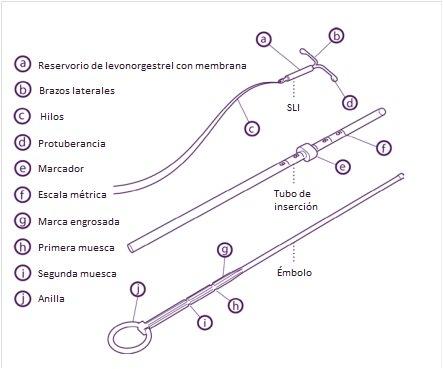
Подготовка к введению
Фигура 2 Фигура 3
Фигура 4 |
| Вставьте плунжер и СВМ в трубку для введения Откройте частично блистер (около 1/3 от нижней части) и вставьте плунжер в трубку для введения. Отсоедините нити от маркера. Потяните за нить, чтобы вставить СВМ в трубку. Руки СВМ должны быть в горизонтальной плоскости, параллельно плоской стороне маркера. |
Фигура 5 | Поместите нижний край маркера на значение измеренной глубины Поместите нижний край синего маркера на значение, полученное гистерометрией. Плоские стороны маркера должны всегда быть параллельны рукам. Это позволит рукам правильно разойтись в маточной полости. | |
Введение Фигура 6 | Отрегулируйте положение СВМ в трубке для введения Удерживайте плунжер крепко, пока тянете за нить и перемещаете трубку, чтобы отрегулировать положение СВМ. Выступы боковых рук должны быть противоположны, немного выше верхнего конца трубки для введения (см. увеличенный вид 1), и дистальный край трубки должен быть выровнен с первой насечкой плунжера (см. увеличенный вид 2). Если трубка не выровнена с первой насечкой плунжера, потяните за нить сильнее. | |
Фигура 7 | Вставьте устройство в цервикальный канал до тех пор, пока синий маркер не будет в контакте с шейкой матки Вытащите все устройство из блистера, удерживая крепко плунжер и трубку вместе в правильно отрегулированном положении. Вставьте устройство в цервикальный канал до тех пор, пока синий маркер не будет в контакте с шейкой матки. | |
Фигура 8 | Освободите руки системы внутриматочного высвобождения Удерживайте плунжер, отпустите нить и потяните трубку для введения вниз до тех пор, пока ее нижний конец не достигнет второй насечки плунжера. | |
Фигура 9 | Нажмите устройство против дна матки Чтобы позиционировать СВМ в маточной полости, нажмите трубку для введения одновременно с плунжером до тех пор, пока синий маркер не будет снова в контакте с шейкой матки. Левосерт будет тогда правильно размещен в маточной полости. | |
Фигура 10 | Переместите СВМ из трубки в маточную полость Не двигая плунжер, потяните трубку для введения вниз до кольца плунжера. Легкое сопротивление отмечает прохождение через утолщение плунжера. Однако потяните трубку вниз до кольца плунжера. СВМ будет тогда полностью освобождено из трубки для введения. | |
| Вытащите компоненты аппликатора последовательно и отрежьте нити Вытащите последовательно сначала плунжер, а затем трубку для введения. Отрежьте нити на расстоянии 3 см от шейки матки. |
Введение Левосерта завершено.
Важная информация, которую следует учитывать во время или после введения:
- Если вы подозреваете, что СВМ не находится в правильном положении:
- Проверьте введение с помощью ультразвука или другой подходящей радиологической пробы.
- Если подозревается неправильное введение, удалите СВМ. Не вводите снова тот же СВМ после его удаления.
ВАЖНО!
В случае трудного введения и/или исключительного боли или кровотечения во время или после введения необходимо немедленно провести физический осмотр и ультразвук, чтобы исключить перфорацию матки или шейки матки. Физический осмотр в одиночку (включая проверку нитей) может быть недостаточным для исключения частичной перфорации. Если необходимо, удалите систему и вставьте новый стерильный систем.
После введения женщины должны быть повторно осмотрены через 4-6 недель, чтобы проверить нити и убедиться, что устройство находится в правильном положении. Сообщите о любом случае перфорации матки или трудностей введения через систему фармакологического надзора за лекарственными средствами для человека: https://www.notificaram.es.
Удаление/замена
СВМ удаляется путем легкого потягивания за нити с помощью пинцета. Использование чрезмерной силы или острых инструментов во время удаления может привести к разрыву системы.
Если нити не видны и обнаружено, что система находится в маточной полости при ультразвуковом осмотре, ее можно удалить с помощью узких пинцетов. Это может потребовать расширения цервикального канала или хирургического вмешательства.
После удаления СВМ необходимо осмотреть систему, чтобы убедиться, что она целая и полностью удалена. Во время трудных удалений были зарегистрированы отдельные случаи, когда цилиндр гормона скользил по горизонтальным рукам, полностью скрывая их внутри цилиндра. Это состояние не требует каких-либо дополнительных вмешательств после того, как было подтверждено, что СВМ целое. Выступы горизонтальных рук обычно предотвращают полное разделение цилиндра от корпуса в форме буквы Т.
- Страна регистрации
- Активное вещество
- Требуется рецептДа
- Производитель
- Информация носит справочный характер и не является медицинской рекомендацией. Перед приемом любых препаратов проконсультируйтесь с врачом. Oladoctor не несет ответственности за медицинские решения, принятые на основе этого контента.
- Аналоги ЛЕВОСЕРТ 0,02 мг КАЖДЫЕ 24 ЧАСА ВНУТРИМАТЕРОЧНАЯ СИСТЕМА ПРОДОЛЖИТЕЛЬНОГО ВЫСВОБОЖДЕНИЯФорма выпуска: ВНУТРИМАТОЧНАЯ СПИРАЛЬ, 13,5 мг левоноргестрелаАктивное вещество: plastic IUD with progestogenПроизводитель: Bayer Hispania S.L.Требуется рецептФорма выпуска: ВНУТРИМАТОЧНАЯ СПИРАЛЬ, 19,5 мгАктивное вещество: plastic IUD with progestogenПроизводитель: Bayer Hispania S.L.Требуется рецептФорма выпуска: ВНУТРИМАТОЧНАЯ СПИРАЛЬ, 0,02 мг/24 чАктивное вещество: plastic IUD with progestogenПроизводитель: Gedeon Richter Plc.Требуется рецепт



